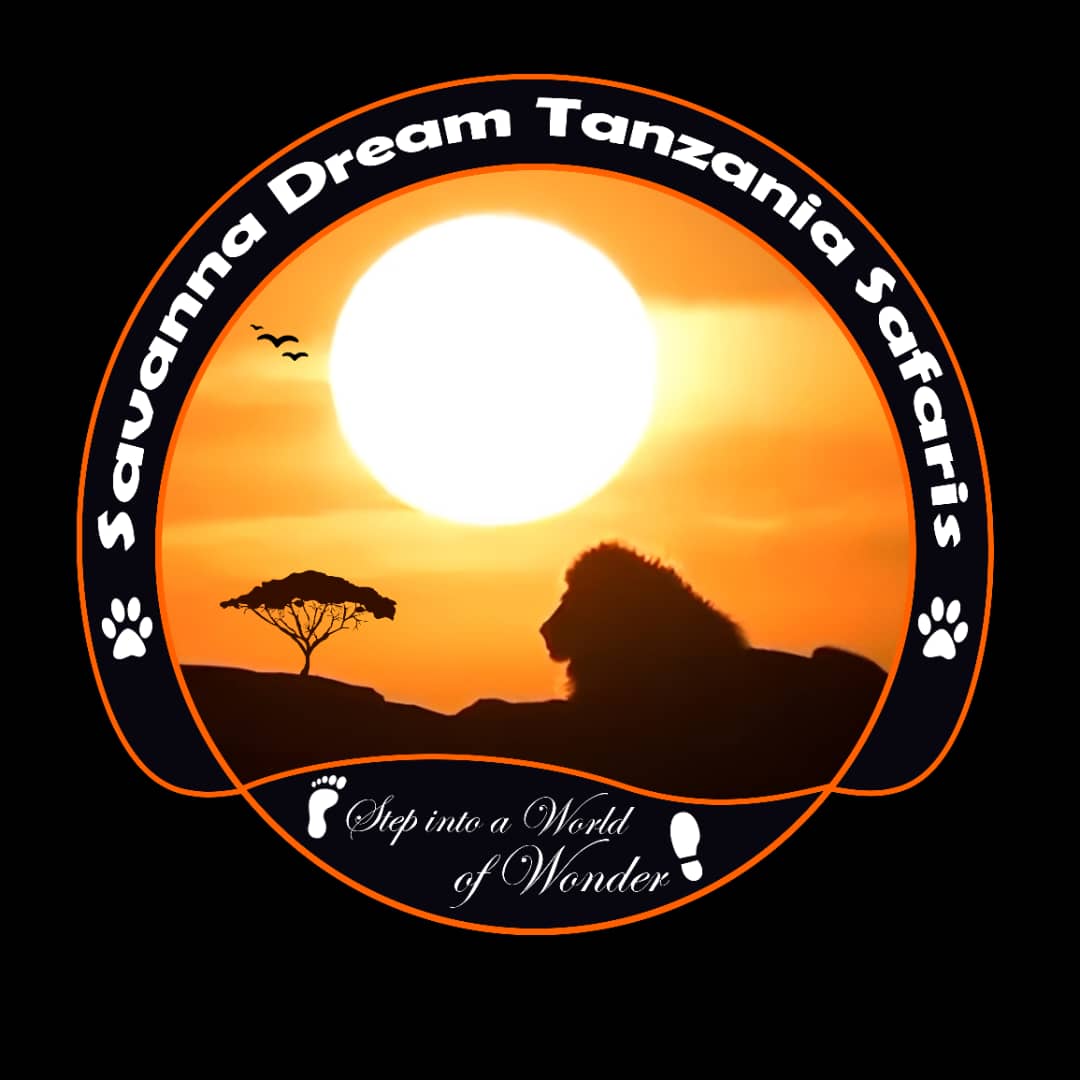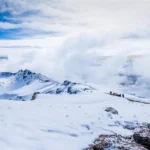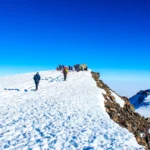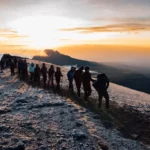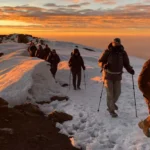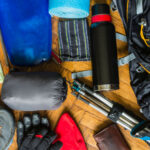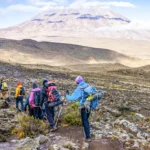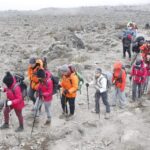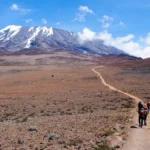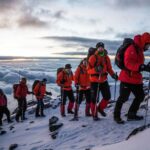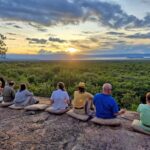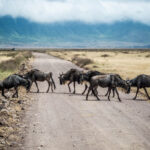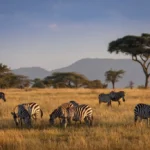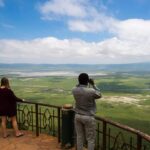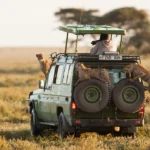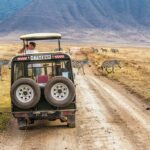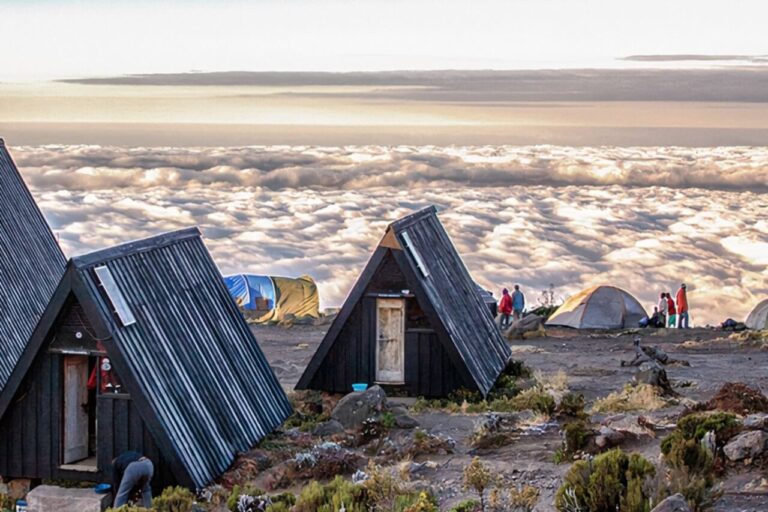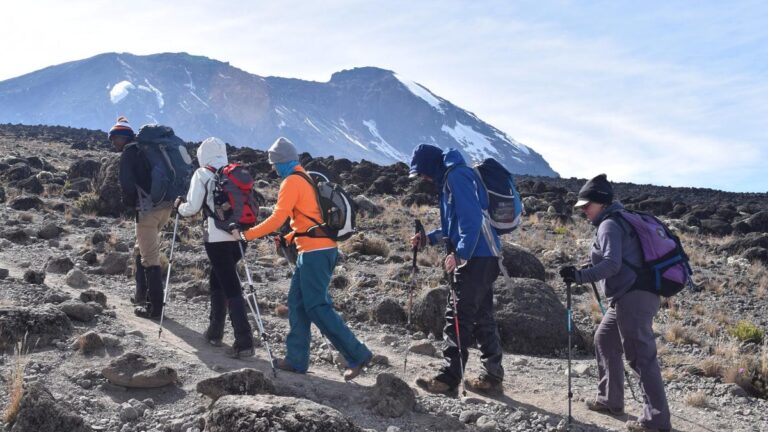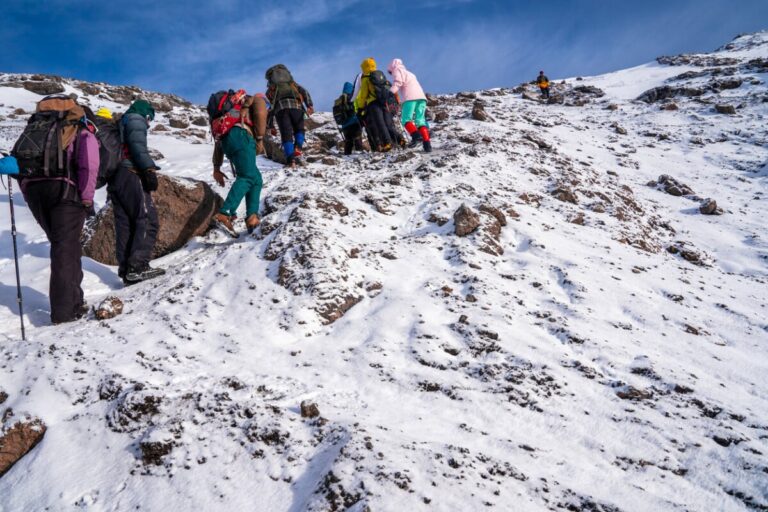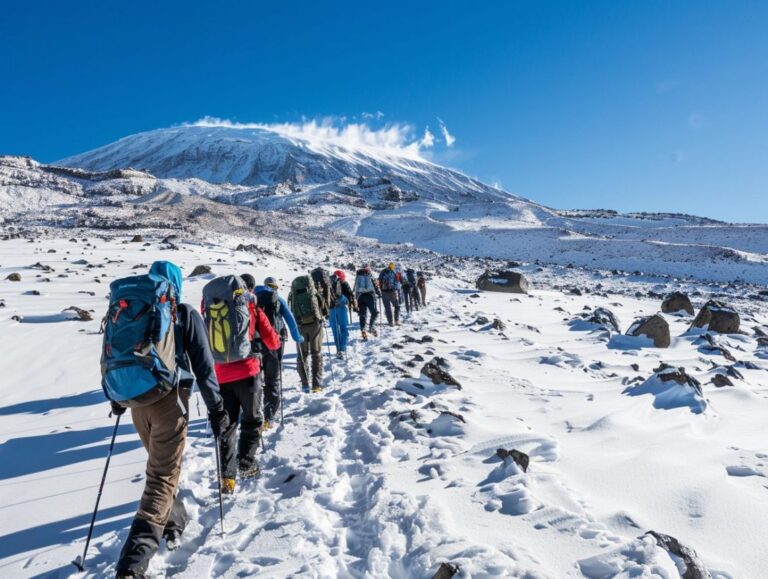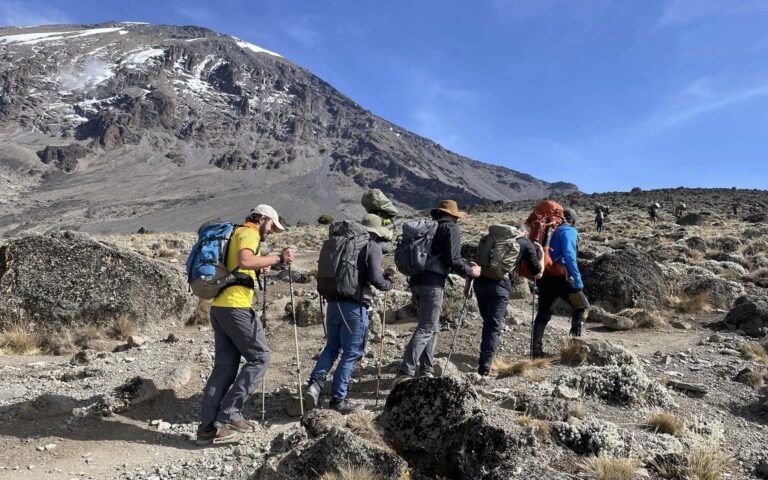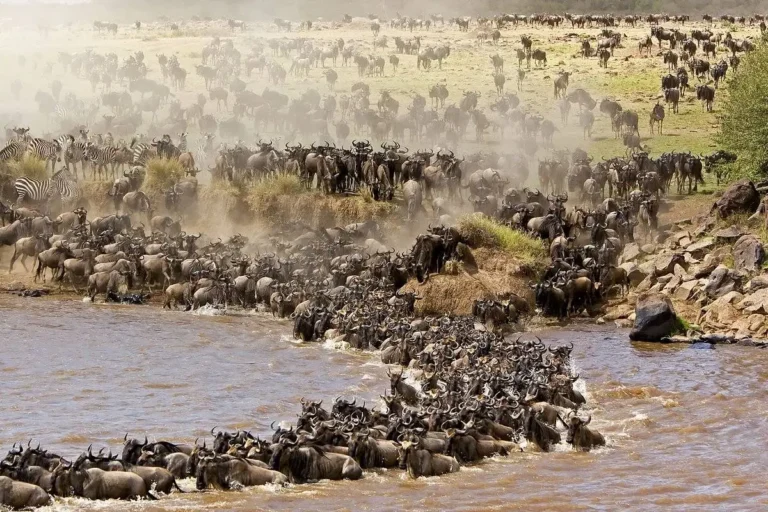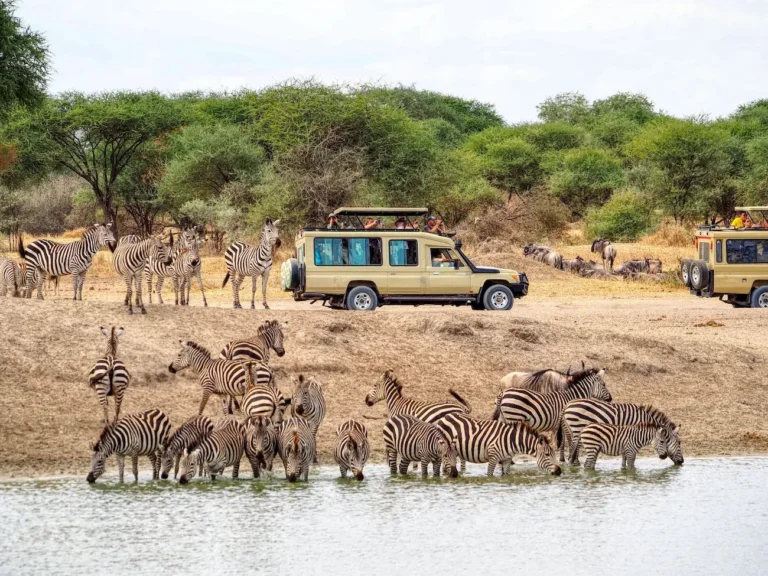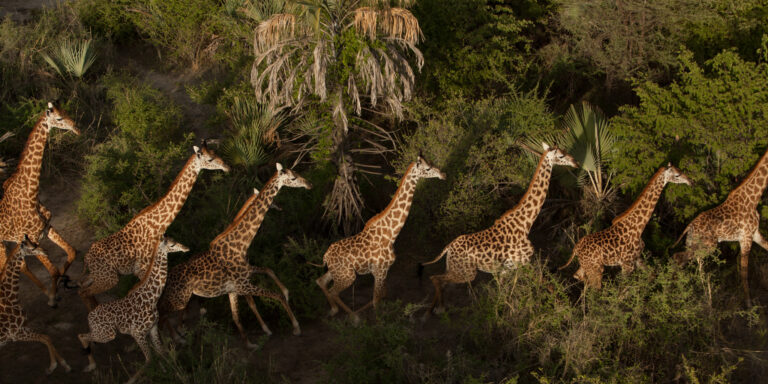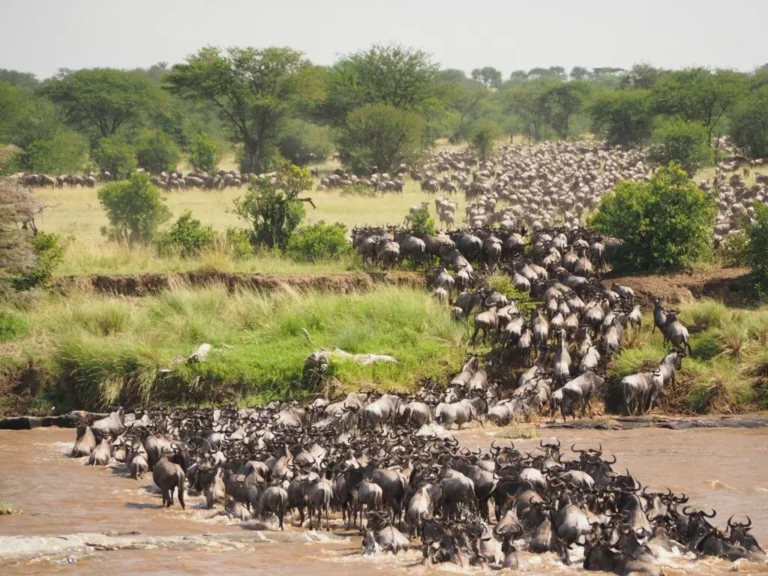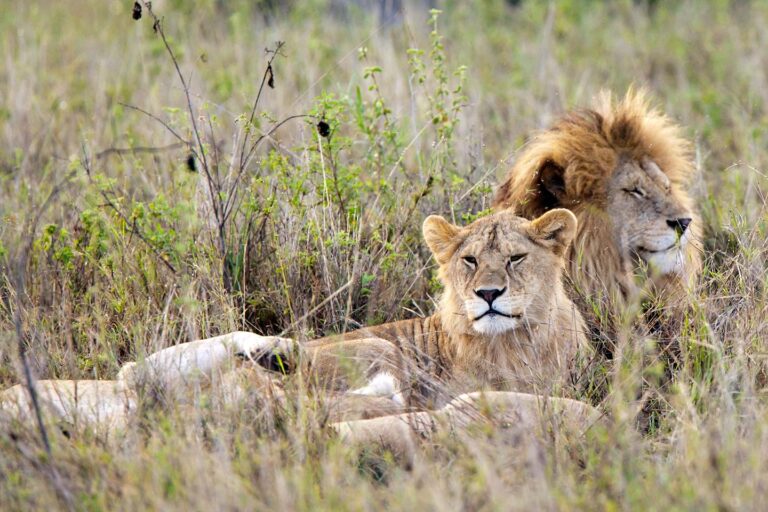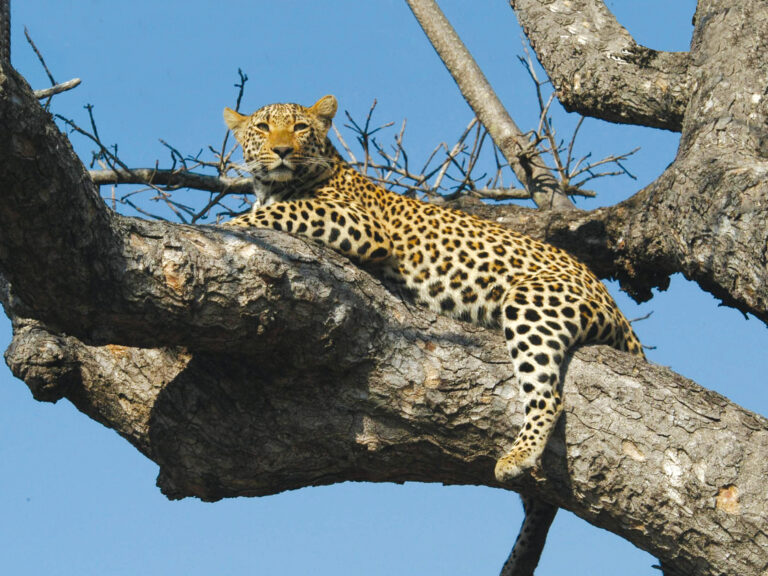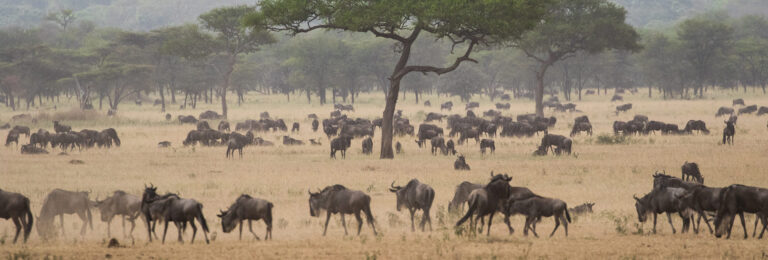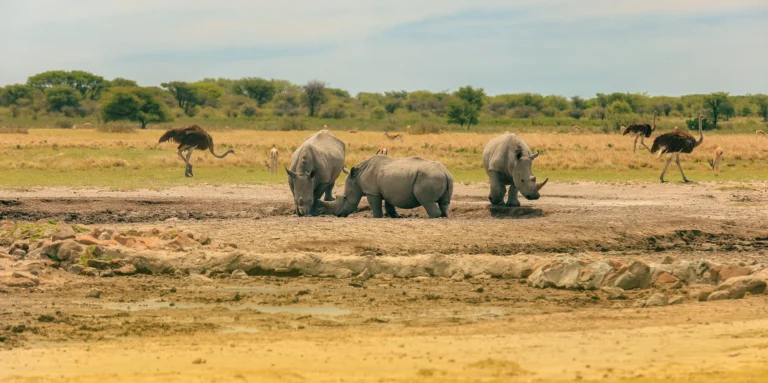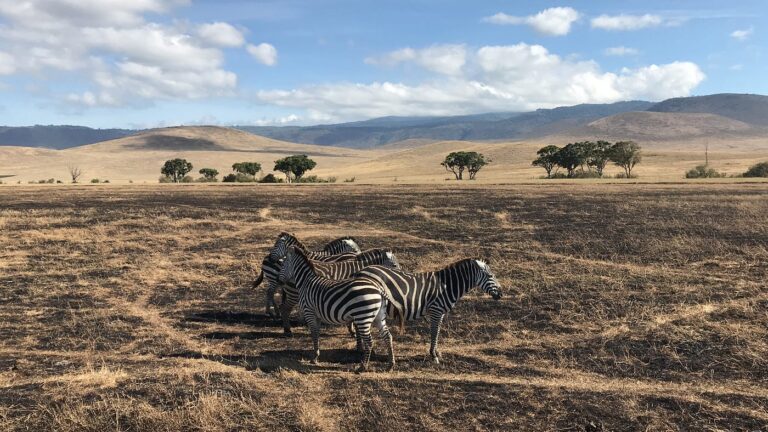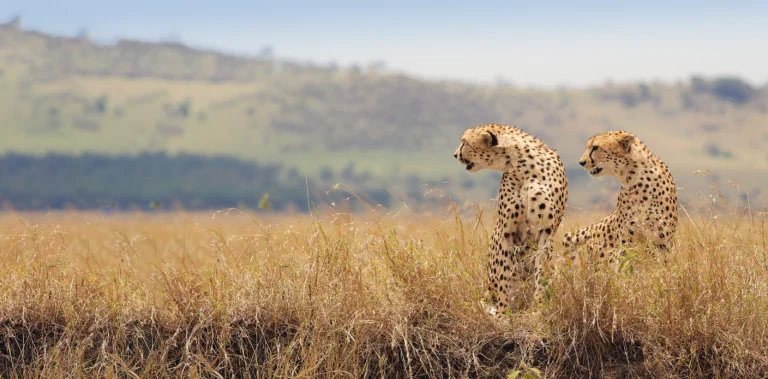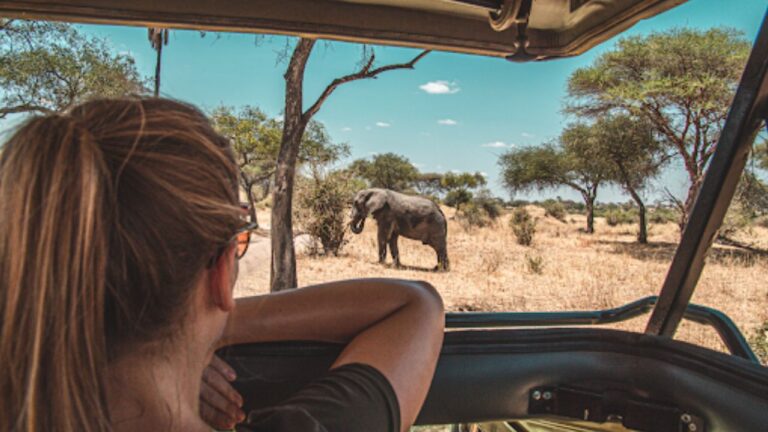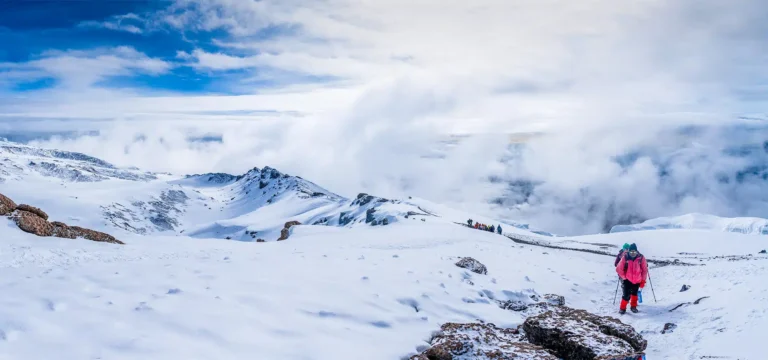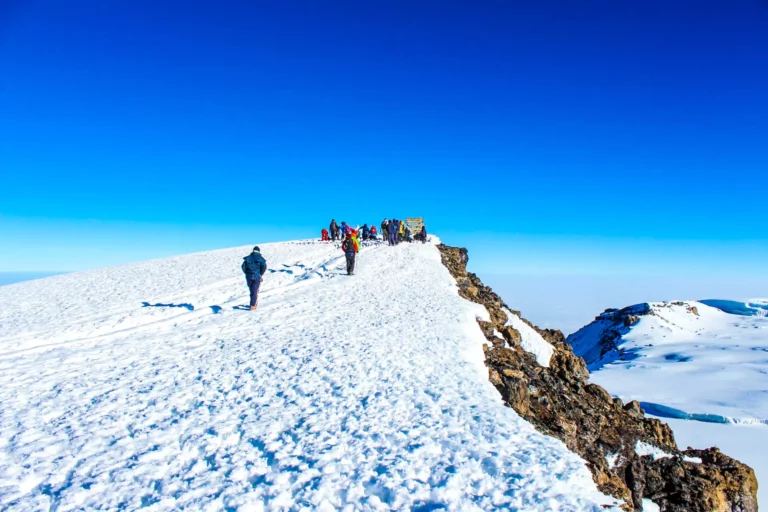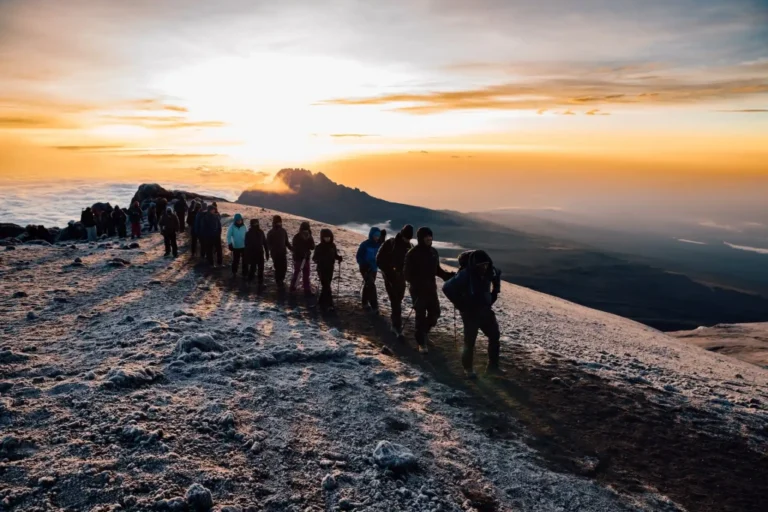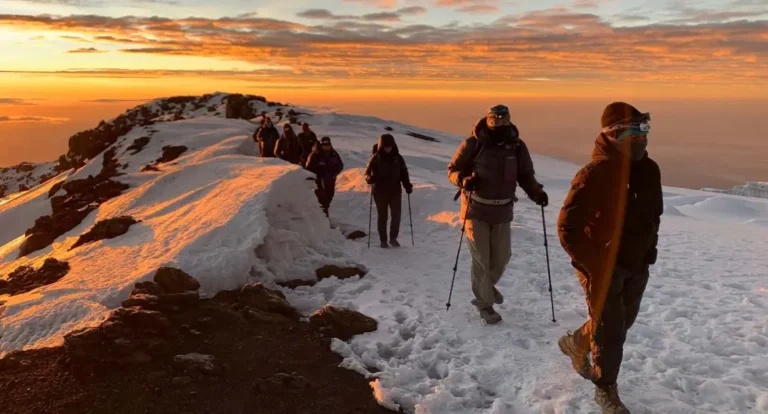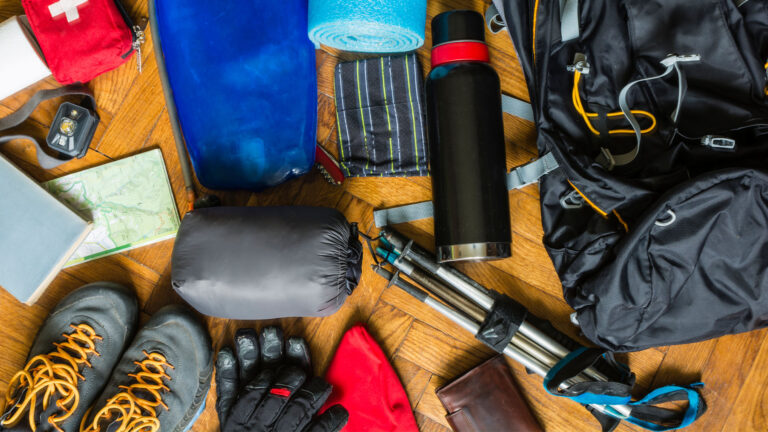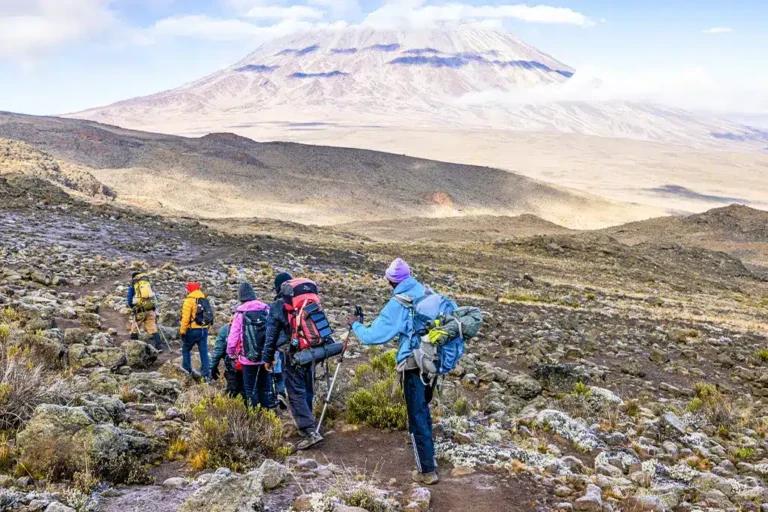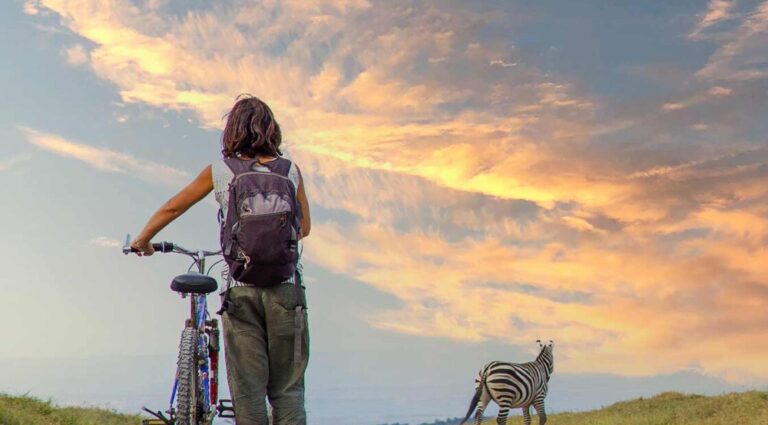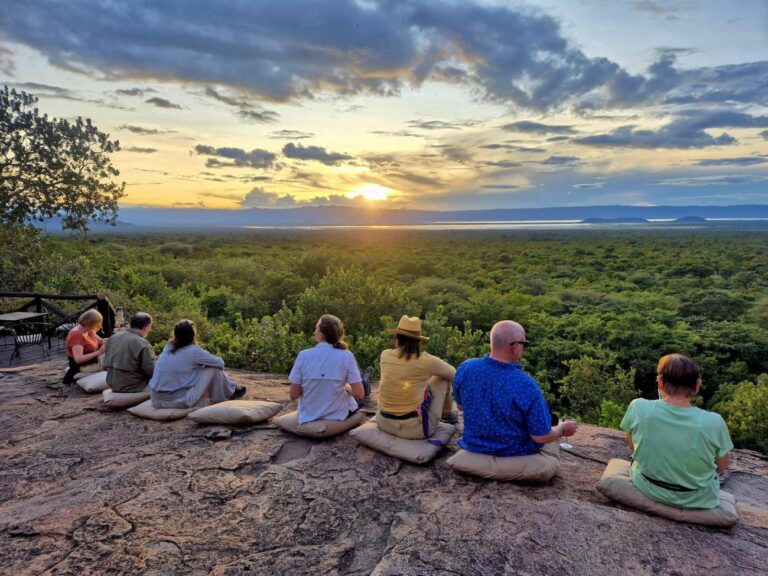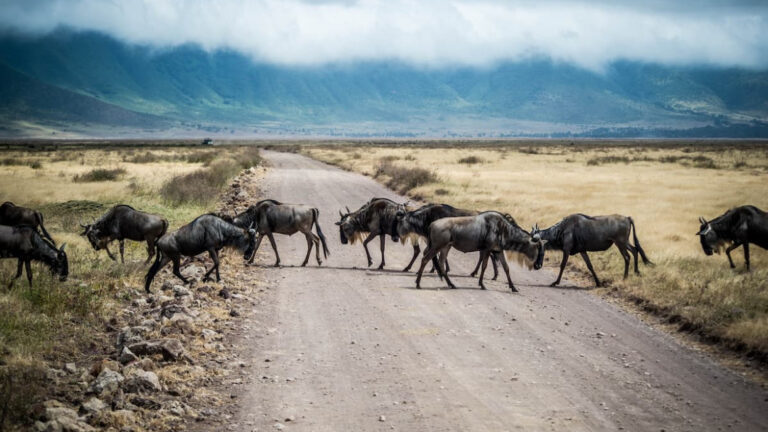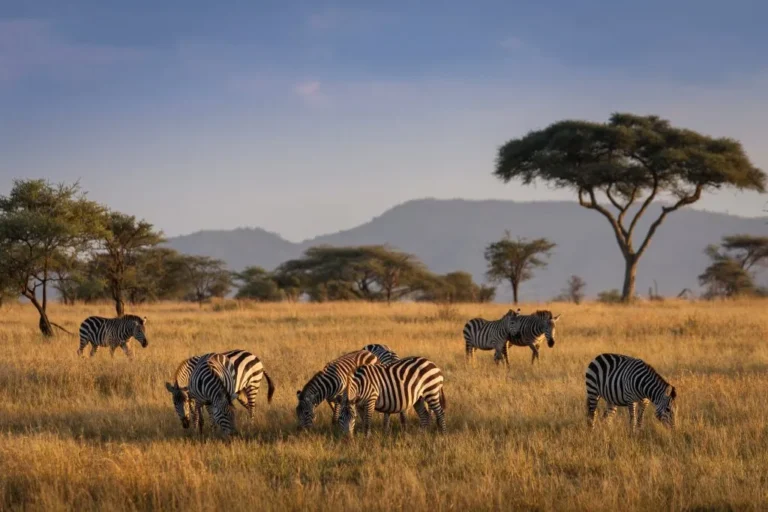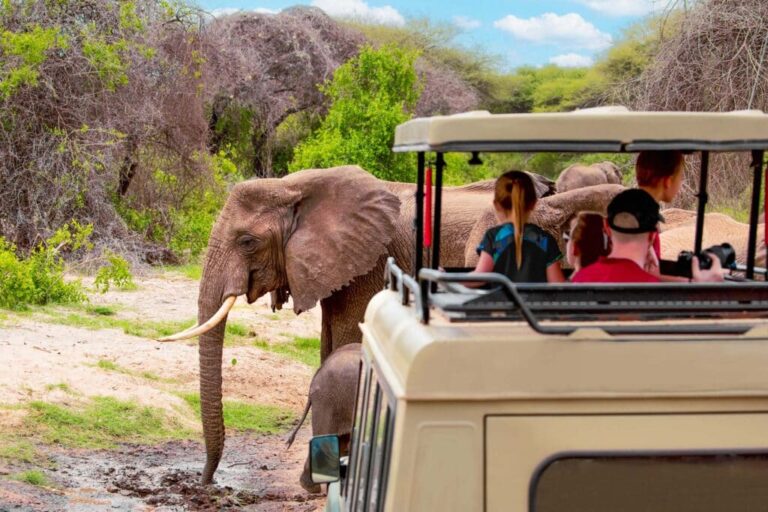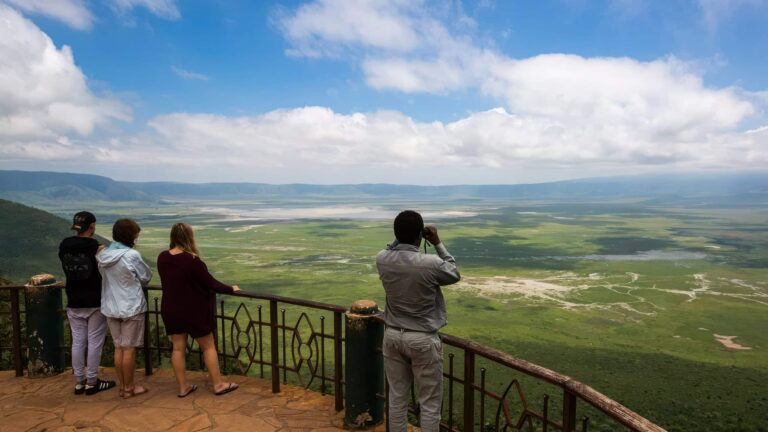Il Kilimanjaro, la vetta più alta dell’Africa, offre diversi percorsi di trekking, ciascuno con paesaggi, sfide ed esperienze uniche. La scelta del percorso giusto dipende dalla tua forma fisica, dagli obiettivi di acclimatazione e dalle preferenze di avventura. Tra le opzioni più popolari ci sono i sentieri Machame, Lemosho e Marangu.
Il sentiero Machame, spesso chiamato “Whiskey Route”, è noto per il terreno impegnativo e le salite ripide. È altamente panoramico, attraversando foreste pluviali, brughiere e deserti alpini prima di raggiungere la vetta. Gli escursionisti beneficiano di un buon programma di acclimatazione di 6–7 giorni, rendendolo ideale per chi desidera una scalata gratificante ma fisicamente impegnativa.
Il sentiero Lemosho è considerato uno dei percorsi più belli e meno affollati. Partendo dal lato occidentale, offre viste panoramiche e paesaggi variegati, comprese foreste lussureggianti, valli vulcaniche e l’Altopiano Shira. Lemosho permette un itinerario più lungo, solitamente di 7–8 giorni, che migliora l’acclimatazione e le probabilità di successo in vetta. È perfetto per chi cerca un trekking scenografico e immersivo.
Il sentiero Marangu, noto anche come “Coca-Cola Route”, è il percorso più antico e consolidato del Kilimanjaro. È meno impegnativo fisicamente e utilizza rifugi invece del campeggio. Con un itinerario tipico di 5–6 giorni, offre una scalata più confortevole, ma con meno punti panoramici rispetto a Machame o Lemosho. Marangu è ideale per chi scala per la prima volta e preferisce comodità e supporto strutturato.
I livelli di difficoltà variano significativamente. Machame e Lemosho sono più faticosi a causa delle distanze più lunghe e dei tratti ripidi, mentre Marangu è moderato e più accessibile per chi ha poca esperienza di trekking. I giorni extra su Machame e Lemosho migliorano anche l’acclimatazione, riducendo il rischio di mal di montagna.
I paesaggi differiscono lungo ogni percorso. Machame offre ecosistemi diversi e viste spettacolari. Lemosho è lussureggiante e panoramico, con opportunità fotografiche straordinarie. Marangu è più breve ma attraversa comunque foreste e zone alpine, offrendo un assaggio della bellezza naturale del Kilimanjaro.
Anche i livelli di affollamento possono influire sull’esperienza. Machame è popolare e può essere affollato in alta stagione, Lemosho è più tranquillo grazie a pochi tour operator che utilizzano questo percorso, mentre Marangu è affollato durante le festività ma offre il comfort dei rifugi e delle strutture consolidate.
Alloggi e supporto variano. Machame e Lemosho sono principalmente percorsi in campeggio, con tende e mensa per i pasti. Marangu offre rifugi, rendendo la scalata più confortevole ma meno flessibile per soste panoramiche. Guide e portatori sono forniti su tutti i percorsi, garantendo sicurezza e supporto logistico.
Anche le probabilità di raggiungere la vetta variano. Itinerari più lunghi come Lemosho e Machame offrono una migliore acclimatazione e maggiori possibilità di raggiungere Uhuru Peak. Il programma più breve di Marangu può risultare sfidante per alcuni, sebbene il sistema dei rifugi offra vantaggi in termini di riposo e protezione.
In definitiva, la scelta del percorso dipende da forma fisica, esperienza, preferenze paesaggistiche e livello di comfort. Machame è adatto agli amanti dell’avventura pronti a sfidarsi, Lemosho attrae chi desidera un trekking più lungo e scenografico con migliore acclimatazione, mentre Marangu è ideale per chi cerca comodità e praticità.
